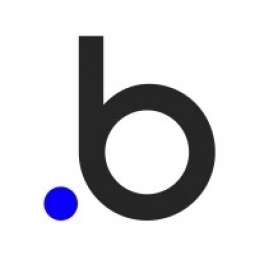技术
- 平台即服务 (PaaS) - 应用开发平台
- 传感器 - 电表
适用行业
- 教育
- 电子产品
用例
- 楼宇自动化与控制
- 时间敏感网络
服务
- 培训
关于客户
Learning Circuits的主要用户是儿童和青少年,一般年龄在8-10岁,他们正在学习电力和电路的基础知识。该应用程序旨在支持四年级(美国)/关键阶段 2(英国)课程。它提供交互式教程,指导学习者了解该主题的不同方面,包括基本电路、电源类型、电器类型、不同电路、开关如何工作、安全性以及如何更改电路中的组件。该应用程序还包括一个测验和一个交互式电路构建器,供学习者测试他们的知识并练习他们的技能和理解。只要能够访问互联网,世界各地的学习者都可以使用该应用程序。
挑战
Learning Circuits 的创始人兼 FutureLearn 的学习总监 Matt Jenner 在想要重建他的应用程序 Learning Circuits 时面临着挑战。该应用程序最初于 2004 年推出,基于 Flash 构建,旨在向儿童和年轻人传授电力和电路的基础知识。然而,随着 Flash 的衰落,Matt 需要重建该应用程序。他在 2019 年尝试使用专业的电子学习创作软件,但对结果不满意。他还发现,由于他的技能,很难用 HTML5 从头开始重建应用程序。此外,他希望让该应用程序对学习者(通常为 8 至 10 岁)更具互动性和吸引力。
解决方案
Matt 决定使用 Bubble(一种无代码工具)来重建学习电路。 Bubble 提供了构建功能齐全的 Web 应用程序所需的所有功能,而无需了解如何编码。通过 Bubble,Matt 能够创建交互式教程,指导学习者完成四年级(美国)/关键阶段 2(英国)课程的不同部分。这些教程对基本电路、电源类型、电器类型、不同电路、开关如何工作、安全性以及如何更改电路中的组件进行了解释。还有一个测验和一个交互式电路构建器,供学习者测试他们的知识并练习他们的技能和理解。这些教程采用单页格式,但使用隐藏组来添加分页。交互式元素有助于练习新知识或技能,但使用带有视觉图形和动画的简单动作。
运营影响
数量效益

Case Study missing?
Start adding your own!
Register with your work email and create a new case study profile for your business.
相关案例.

Case Study
Remote Temperature Monitoring of Perishable Goods Saves Money
RMONI was facing temperature monitoring challenges in a cold chain business. A cold chain must be established and maintained to ensure goods have been properly refrigerated during every step of the process, making temperature monitoring a critical business function. Manual registration practice can be very costly, labor intensive and prone to mistakes.

Case Study
Cloud Solution for Energy Management Platform-Schneider Electric
Schneider Electric required a cloud solution for its energy management platform to manage high computational operations, which were essential for catering to client requirements. As the business involves storage and analysis of huge amounts of data, the company also needed a convenient and scalable storage solution to facilitate operations efficiently.

Case Study
Leveraging the IoT to Gain a Competitive Edge in International Competition
Many large manufacturers in and outside Japan are competing for larger market share in the same space, expecting a growing demand for projectors in the areas of entertainment, which requires glamor and strong visual performance as well as digital signage that can attract people’s attention. “It is becoming more and more difficult to differentiate ourselves with stand-alone hardware products,” says Kazuyuki Kitagawa, Director of Service & Support at Panasonic AVC Networks. “In order for Panasonic to grow market share and overall business, it is essential for us to develop solutions that deliver significant added value.” Panasonic believes projection failure and quality deterioration should never happen. This is what and has driven them to make their projectors IoT-enabled. More specifically, Panasonic has developed a system that collects data from projectors, visualizes detailed operational statuses, and predicts issues and address them before failure occurs. Their projectors are embedded with a variety of sensors that measure power supply, voltage, video input/ output signals, intake/exhaust air temperatures, cooling fan operations, and light bulb operating time. These sensors have been used to make the projector more intelligent, automatically suspending operation when the temperature rises excessively, and automatically switching light bulbs. Although this was a great first step, Panasonic projectors were still not equipped with any capability to send the data over a network.






